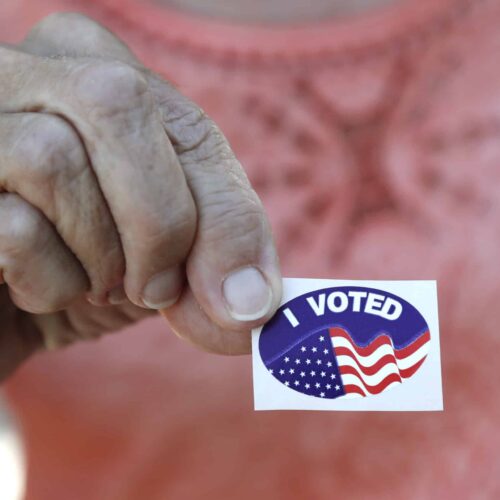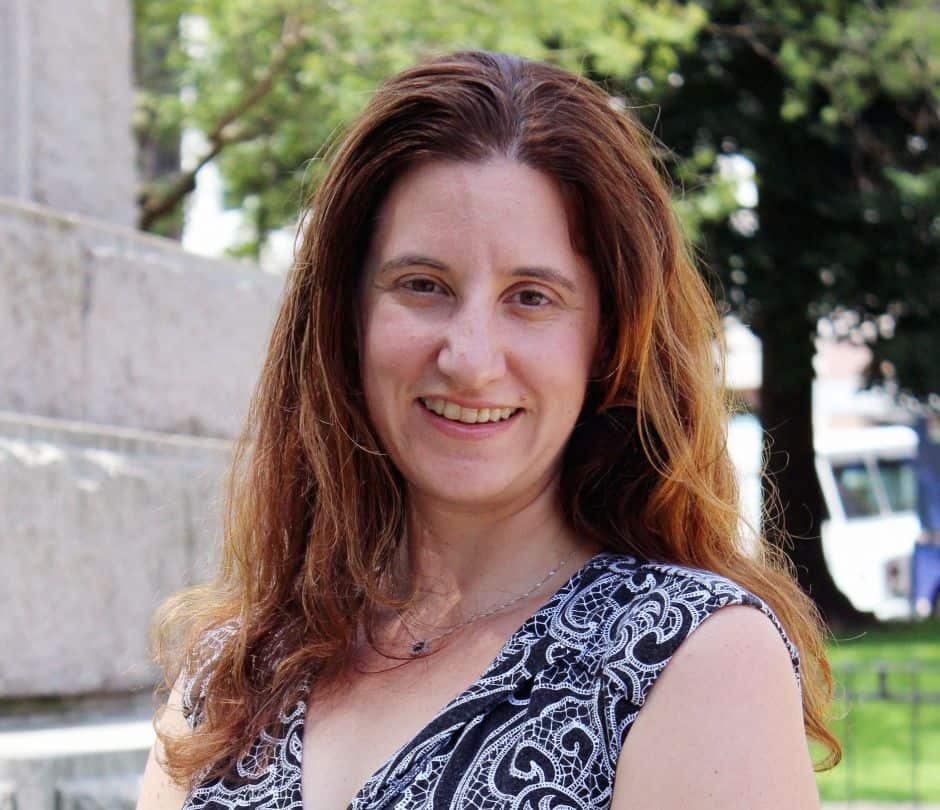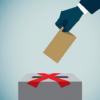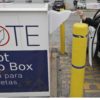This article was published in partnership with Stateline.
Introduction
When the pandemic hit and more than a thousand of Madison, Wisconsin’s usual poll workers backed out of working the April primary, City Clerk Maribeth Witzel-Behl needed replacements who were available to work late, had customer service skills and knew how to assess a photo ID.
Coincidentally, her office also handles licensing for a couple thousand people who fit that description and were out of work because of COVID-19: bartenders.
Chad Vogel, who owns three bars on the east side of town, worked at the elementary school that serves as his own neighborhood polling place — and he ran into some customers. “I hadn’t seen them in like a month and a half, so it was kind of nice to see people,” he said, adding he’s likely to work the polls again in November and recruit other bartenders to join him.
Witzel-Behl was ultimately able to open around two-thirds of her normal polling sites, 66 locations out of 92. That’s far more than Milwaukee, which cited the poll worker shortage as a major reason it only opened five, compared with its normal 180.
She is, of course, far from the only election official scrambling this year with a host of challenges: replacing typically older poll workers who aren’t available due to COVID-19 fears, finding enough space to provide social distance between voting booths and, for those who won’t visit in-person locations, providing expanded absentee voting options.
As election officials face unprecedented challenges and the presidential election looms, many are turning to one another for solutions. Local election officials with experience switching from neighborhood polling places to centralized vote centers and handling the transition to vote by mail are sharing the lessons they’ve learned in hopes of smoothing the path for others.
“For most jurisdictions across the country, this is going to be the single biggest change in one election cycle that voters have seen,” said Mindy Romero, a political sociologist who is founder and director of the Center for Inclusive Democracy, part of the University of Southern California’s Sol Price School of Public Policy.
“They’re going to need to not only know about it, but feel comfortable with it.”
The Center for Public Integrity and Stateline spoke to 20 election experts and local election officials who have experience managing significant shifts in how people vote, especially those involving polling place consolidation, and found valuable lessons.
The United States’ hodgepodge oversight of elections — more than 10,000 separate jurisdictions, each with its own rules, quirks and needs — means no solution works perfectly everywhere. But sometimes, crisis breeds creativity.
1. Make sure the right laws are in place
In Missouri, the law requires all voters to be assigned a polling place. Local elections officials in St. Louis County are complying, but they’re also telling voters they can go to any polling place in the county.
The law doesn’t prohibit it, said Eric Fey, the Democratic director of elections for the county, “and we’re in an unprecedented situation.” Poll workers can print the correct ballot on demand (he expects the county to have about 1,200 variations on the ballot in November).
The county expects to cut polling locations in November by roughly a third, Fey said, and this way, voters who face lines can change locations.
In Kentucky, state law said Gov. Andy Beshear (a Democrat), Secretary of State Michael Adams (a Republican) and the nonpartisan State Board of Elections all had a say in the emergency changes to the primary.
Working across party lines, they agreed to allow early voting in Kentucky for the first time before the June primary, and permitted Kentuckians to vote using absentee ballots without an excuse. They’ve finalized another bipartisan plan for November.
Raoul Cunningham, president of Louisville NAACP and a member of the national NAACP board of directors, praised officials’ handling of the primary. When the emergency is over, he said, the state should change its election laws to permanently allow early and no-excuse absentee voting, and extend polling place hours past 6 p.m., one of the earliest closing times in the nation.
Other states also have made changes, at least for this year, either voluntarily or in response to lawsuits. Rhode Island voters will no longer need two witnesses or a notary in order to cast a mail ballot in November. California will send every registered voter a mail-in ballot. Connecticut is allowing voters to cast absentee ballots without an excuse.
2. Make sure your system is built on good tech
In 2018, San Mateo County, California, struggled with long lines in its first election using reduced polling locations and more mail-in voting. Jim Irizarry, the county’s assistant chief elections officer, blames decade-old technology that made it tough to quickly determine voters’ registration status. “If we had a little hiccup with the old voting system, you’re toast,” Irizarry said.
The county put new systems and machines in place in 2019 that officials say more effectively guide voter registration, send ballots to voters, track ballots in the mail, receive and process mail-in ballots, verify signatures, correct challenged ballots, check voters in at voter centers, quickly scan ballots, and audit election results.
3. Check your voter rolls, then check them again
When Rozan Mitchell walked into her office as the new elections director for Utah County, Utah, in February 2019, there were thousands of undelivered mail-in ballots stacked around the room, returned because of inaccurate addresses. “It was good to see that,” she said, “and say, ‘I know exactly what we need to do.’”
The success of a vote-by-mail system depends on the accuracy of voter registration lists, Mitchell said. Without that, ballots go unreceived and voters are forced to polling places on Election Day.
In addition to coordinating with the state’s Driver License Division, Mitchell’s office every three months runs its voter rolls through the U.S. Postal Service’s National Change of Address Program, seeing which voters moved. The county, just south of Salt Lake City, saw more than a tenth of its ballots returned undelivered in 2018. Because of Mitchell’s software updates and focus on addressing, that number went down to 2.7% in June’s primary, she said.
4. Track your ballots
In Pasco County, Florida, election officials and voters can track mail-in ballots like an Amazon package through Ballot Scout (a tool created by Democracy Works, which is funded in part by The Pew Charitable Trusts — which also funds Stateline). Voters can receive text or email alerts when the county receives their ballot, counts it or needs a signature correction. It has helped reduce rejected ballots, said Brian Corley, the supervisor of elections.
Many other places use other ballot tracking tools, including BallotTrax, or systems created by individual states.
5. Change the way you talk about mail deadlines
Explain deadlines so voters cast their ballots in time. More than half a million ballots were rejected during the primaries this year because they arrived or were postmarked too late to be counted, contained minor errors or because of strict rules, according to a Washington Post analysis. Postal Service slowdowns have increased in recent weeks.
In Davis County, Utah, for example, local election officials printed a recommended mail-by date on envelopes rather than the postmark deadline — a semantic adjustment that reduced the number of late ballots, said Brian McKenzie, the county’s chief deputy clerk/auditor.
6. Set up drop boxes
Election officials have spent months trying to establish voter trust with the new process, through billboards, emails, letters, postcards, social media, explainer videos and working groups with local activists.
This sort of outreach is especially important for voters of color, who often fear their mail-in ballot won’t be counted, said Jennifer Lumpkin, civic engagement strategy manager for Cleveland Votes, a voting rights organization that mobilizes low-turnout communities.
She encourages voters to drop off ballots at the local election office (many states have drop boxes) to avoid the risk of inconsistent mail service, which she said hit Black voters there hard during the April primary.
“People do not trust the mail system because we saw it not work well during the primary, and we saw there were disparities in who got the mail and who didn’t, and who got it early and who didn’t,” Lumpkin said. “It’s not a security issue, it’s an issue of suppression.”

Her organization has embedded in the majority-Black east side of Cleveland to run in-person voter registration drives, absentee ballot request signups, and a yard sign campaign complete with QR codes that can check voter registration. She is working with other voting rights groups and some unconventional partners such as a biscuit shop called the Cleveland Biscuit Heads. Engagement, she said, must start early.
7. Send voters the right message
Lines stretched for hours outside a vote center at Sacramento State University during the June 2018 primary election — the first election under a new model that emphasized mail-in ballots and reduced the number of voting locations in favor of regional vote centers that any voter could use.
Courtney Bailey-Kanelos, Sacramento County, California’s registrar of voters, thought she had communicated the new process well in the months leading up to the election. But when she arrived at the college campus, she knew something had gone wrong. With the lines still streaming out the door at 10 p.m., she talked to a woman waiting to cast her ballot.
“She said, ‘I don’t understand why you made me go to this site with all these kids,’ and I realized, gosh, we failed here,” Bailey-Kanelos said. “She didn’t realize that she could go to any location on any day.”
Reaching voters often is easier said than done. Inevitably, counties that transition to a voting model that reduces voting locations must contend with voters who stubbornly want to vote at their old neighborhood polling place, or infrequent voters who never heard about the changes. Long lines in that first election in a new system are typical, several officials said.
“There’s a learning curve for not just election officials, but there’s also a learning curve for voters,” said Justin Lee, director of elections for the state of Utah, which transitioned county by county over the past decade to a vote-by-mail model.
And election officials don’t control everything. The weekend before Kentucky voters went to vote in the June presidential primary, social media was flooded with posts warning voter disenfranchisement efforts were underway in the Bluegrass State.
It’s true that Jefferson County, which encompasses Louisville, was to have only one polling location for Election Day after record mail-in and early voting. But it wasn’t just a normal polling location in a church. It was the Kentucky Exposition Center — 1.3 million square feet of voting space, housing more than 400 voter booths and 19 check-in tables.
But as social media posts, lacking that context, spread, people from around the country flooded the phone lines of the State Board of Elections with concern and even death threats. “How many voters passed on voting … to avoid long lines that did not exist?” Jared Dearing, the board’s executive director, said in July testimony at the U.S. Election Assistance Commission. Lines in Jefferson County averaged 15 minutes, and other places around the country are now looking at using arenas, fairgrounds and other large spaces for voting in November.
Voters are bound to have questions about safety, security and privacy, and election officials must be prepared to answer them. Bailey-Kanelos, Irizarry and others say they’ve made videos of their machines at work, and let voters and local reporters watch mail ballot processing as it happens.
8. On a budget? DIY
Chris Anderson, elections supervisor in Seminole County, Florida, temporarily set up his training room like a voting precinct to map out how many voters and poll workers could be in there while complying with social distancing requirements, and to figure out which objects multiple people might touch. His staff also did a mathematical analysis of all voting sites, to figure out where they would need larger rooms for in-person voting.
“I wanted to experience what the voter was going to experience and what the election worker was going to experience,” he said.
Anderson realized the styluses voters use to sign in on iPads were going to be a problem.
On a limited budget, he hit the Dollar Tree. Instead of spending thousands of dollars on disposable styluses, he bought Q-tips and wrapped them in aluminum foil tape. Throw in a wet sponge to moisten the cotton tip (he cut the sponges in half to save more money) and he had a stylus that could work. Even better: Each voter in the August primary got their own stylus, and they were collected to be reused for subsequent elections. Voters “found it was really cool that we would go out of our way to do something creative,” Anderson said.
The county emergency services department was willing to give him hundreds of gallons in alcohol solution to clean pens. When searching for something to put it in at each precinct, he realized the container one of his favorite lunches comes in — pho soup — was sturdy and cheap, about $36 for 100 on Amazon. Bingo.
“I know,” he said, “it sounds kind of MacGyverish.”
9. Use existing tools and educate voters
San Mateo and Sacramento were two of five California counties that switched to a new model under the California Voter’s Choice Act in 2018, and more will follow in 2020. The law calls for mailing every voter a ballot and expanding early voting. It then allows counties to offer fewer Election Day polling places, but permits voters to go to any of them. Because voting rights advocates were concerned the reduction in polling places would disenfranchise some voters, especially voters of color, the California law includes criteria local election officials must take into account when deciding where to put the vote centers, including proximity to low-income communities, communities that speak languages other than English, and areas with low usage of vote by mail.
In California, even when the location criteria for vote centers were written into the law, there were still concerns about how consistently counties would interpret those standards, said the Center for Inclusive Democracy’s Romero.
Her group created a vote siting tool that incorporates all of California’s criteria and suggests locations a half-mile in diameter that would be suitable for vote centers. The tool and the data are public, allowing both registrars and community groups to use it to find options, something she said has sparked data-driven discussions that built trust.
The tool is expanding to 10 more states this year: Arizona, California, Colorado, Florida, Georgia, Michigan, North Carolina, Pennsylvania, Texas and Wisconsin.
10. Give everyone an “I Voted” sticker
Election officials are unanimous: All voters want a symbol of their work. So, put an “I Voted” sticker inside every mail-in ballot envelope.






Join the conversation
Show Comments